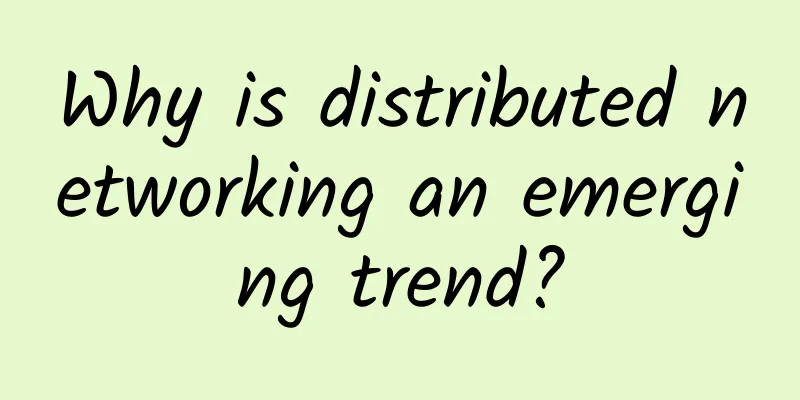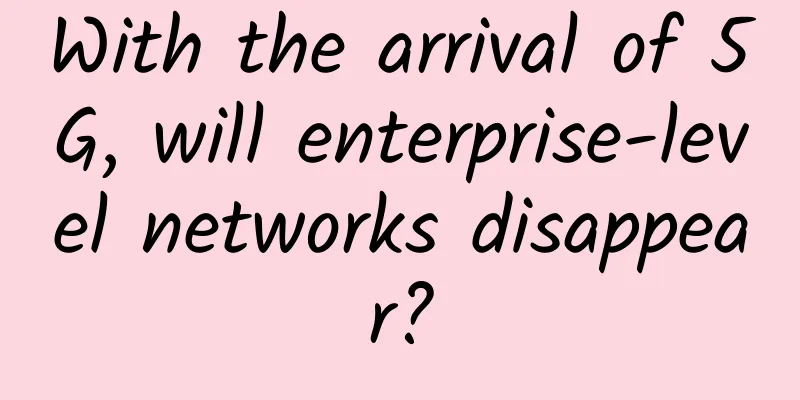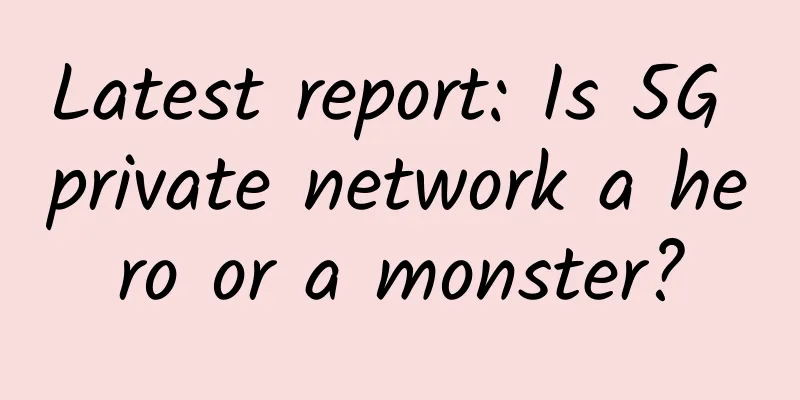Why is distributed networking an emerging trend?

|
The mass adoption of the Internet can be attributed to five important factors: 1. TCP/IP TCP/IP (Transmission Control Protocol/Internet Protocol) refers to the set of standard data communication protocols used on the Internet. It was developed by DARPA and maintained by the Internet Engineering Task Force (IETF). Due to these protocols, we can now participate in email, file transfers, newsgroups, web pages, etc. It is like computers using a common language to communicate with the network. 2. WWW and HTML At the time of its creation, it was used as a system that allowed documents to link to other nodes. This marked the beginning of hypertext, which refers to links stored on computers that exist in the network. Now, users no longer need to know the exact location or system name to access resources through HTML hyperlinks. Websites provide these links that can be clicked, and this entire system of links is called the World Wide Web (WWW). 3. Web Browser The earliest web browser development took place on Mosaic in 1993. Before the browser, a software called Gopher was used to provide access to websites. Over time, new generations of browsers such as Mozilla and Netscape continued to develop more powerful features. 4. Search Engines Earlier, Gopher was used to search. It became less popular when browser-based search engines and other web-based systems such as Lycos, Yahoo, and Webcrawler developed. Google broke into the search engine scene in the late 1990s and is today the most popular search engine on the Internet. It is simple and fast and provides users with the best way to get information on the Internet. In today's time, the term "Google" is used synonymously to search on the Internet. 5. Internet Service Provider The early Internet used to have a dial-up modem connected to a telephone line that provided data rates of 14.4-28.8 kbps, which was enough to meet the data needs of the late 80s and early 90s. During this period, the Internet was mainly text-based. As the Internet grew in popularity and businesses began to adopt it, the demand for faster data speeds emerged. This led to Internet Service Providers (ISPs) launching AOL bundles by mailing free CD software to encourage users to sign up. This is what started the process of obtaining an email address as well as free Internet time. ISPs replaced dial-up services by offering faster DSL and ADSL services. DSL services provide Internet speeds up to 128 kbps. Cable TV companies provide faster Internet speeds using broadband cable modems. This infrastructure was built by telecommunications companies and cable TV giants to provide faster speeds, allowing users to watch videos, chat, browse the web, and download videos at faster speeds. Centralized Network In a centralized network, there is a centralized point, which can be a server, through which all the data in the network must pass to be distributed among different computers or devices. Earlier, the Internet used to operate as an independent network, connecting different people and businesses. It used to pass information around a central point, such as a server, but now there are a small number of networks within a large network. These smaller networks can be people or companies that handle unique data sets. Therefore, regardless of the number of groups, all data accessed worldwide is stored in centralized hardware. Disadvantages of Centralized Networks Security and privacy issues are a major concern with centralized networks. Many Internet companies own data centers that store people’s data and run applications accordingly. Such data centers are constantly under threat from malicious attackers, as they store all the necessary information in one place, where attackers can easily access the data and use it for other types of cyber crimes. How do centralized networks pose a threat? Centralized network services are not classified and regulated like public services. Therefore, for most companies, they must define, interpret, and enforce their rules with some intervention from the government. In addition, a large number of users and customers of these services are located outside their jurisdiction and are subject to completely different rules. What makes the distributed web different? In terms of working, the distributed web is distinguished from the World Wide Web by two major differences. First, in a distributed web, there are peer-to-peer connections where computers not only request services but also provide them. The second difference that a distributed web has is in the method of storing and retrieving information. Today, http and https links are used to identify information on the web, and these links point to the location of the content. However, in the case of distributed web protocols, links are used to identify information based on its content, emphasizing more on the content rather than the location of the content. Distributed Network and Hosting Services The distributed web is a trend towards building hosting services that do not rely on a central organization that monopolizes other organizations. Distributed internet connectivity relies on a peer-to-peer network built on a community of users where no single entity has control. Websites are distributed across multiple nodes, eliminating the possibility of a single server acting as a single custodian of a specific subset of data. The core idea behind the decentralization of hosting services is that the operation of hosting related services will not belong to a powerful company with a monopoly in the industry. In this case, the responsibility of hosting will be shared by multiple servers, or by running servers across client applications using a peer-to-peer distribution model. Comparison of Centralized and Distributed Networks Here are the differences between a distributed network and a centralized network: 1. Data Tracking In the case of centralized network connections, data flowing from one place to another can be easily tracked as long as the information passes through a single point (the server). In contrast, in a decentralized Internet environment, it is impossible to track the flow of data because multiple devices act as nodes for data storage. In this case, an individual can access a given set of information from multiple locations rather than a single central point. 2. Privacy Protection Unlike centralized networks, distributed networks can provide a level of privacy that people need in today’s digital world. Since information passes through many points, entities and governments cannot track an individual’s online activities. The decentralized web is best suited for those who want to protect their privacy and identity regardless of their online activities. 3. Single Point of Failure Centralized network connections present the risk of a single point of failure if data passes through a single point before propagating. Depending on the backup systems in place, a server hosting failure could result in a large amount of data being lost, making it difficult for people to access the data at a given time. On the contrary, in case of distributed network connectivity, the failure of a single access point will never make people unable to access the data present in the network. The presence of multiple nodes makes it possible for people to access the information and reduces the risk of people being unable to access the data regardless of any problem. 4. Limited scalability Limited scalability is another disadvantage of centralized networks, as all core applications reside in a single server machine. As the demand for network connectivity increases, consideration needs to be given to adding more storage and bandwidth as well as processing power. The architecture of a decentralized network allows the workload to be distributed across multiple computers, rather than being confined to one place. Here, the system is “scaled” by adding more nodes to provide more computing power as well as more fault tolerance. 5. Data Censorship and Net Neutrality Centralized network connections come with a lot of disadvantages for end users. For example, Internet Service Providers (ISPs) allowed them to regulate the kind of data and the speed at which people could access information. Today, ISPs don’t treat all kinds of data the same way. Those who are willing to pay more can enjoy better Internet connections than those who pay less. |
<<: What is 6G and when will it be launched?
Recommend
No wonder your Wi-Fi is so slow if you place your router like this
Today, Wi-Fi has become the basic level of Maslow...
New electromagnetic wave router will enable unlimited bandwidth
UCLA researchers, with support from the Defense A...
3000 words on TCP protocol, handshake is not as simple as you think
Last time I talked about the UDP protocol. From t...
Liuliu Cloud: US 9929/UK/Japan native IP hosting monthly payment starting from 50 yuan
666clouds is a Chinese hosting company founded in...
Do you turn off your wireless router when you go to bed at night? Don't worry about radiation
A strange theory about wireless routers has appea...
F5 and Zhiwei Data jointly launched an active application quality measurement solution to help enterprises gain real-time insights into business status
Recently, F5, the world's leading multi-cloud...
AlphaVPS: AMD EYPC KVM monthly payment starts from 3.99 euros, large hard disk KVM annual payment starts from 15 euros
AlphaVPS is a foreign hosting company established...
NB-IoT standard is expected to be commercially available in 2017
June 16, 2016 was the most important day for the ...
Megalayer: Singapore native IP annual payment starts from 249 yuan, Singapore/Hong Kong/Philippines/US VPS annual payment starts from 199 yuan
Megalayer recently launched a VPS host in Singapo...
Ten Limitations of MU-MIMO in WiFi
MIMO technology has continued to evolve since its...
Why are miners rushing to buy graphics cards instead of CPUs? When will the graphics card shortage end?
[[383936]] Recently, it has been a nightmare for ...
Unveiling the network architecture of the 6G era! Six major design concepts, three bodies, four layers, and five aspects in one article
The development of network architecture is one of...
Design tiny url
Design tiny url For example, Maimai will not allo...
The network protocols behind server push, online gaming, and email
We have talked a lot about network protocols befo...









